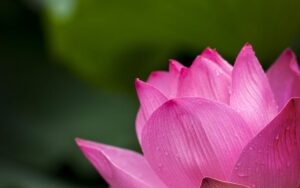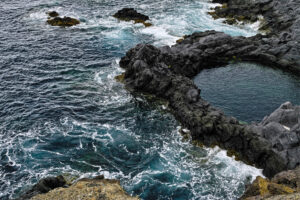I did a Q & A last week on Facebook about kundalini and spiritual awakening to celebrate the release of my new book, Working with Kundalini (out Tuesday, or April in the UK).
I am not accepting any new questions, but look forward to everyone receiving the book, which is an in-depth look at the kundalini awakening process, derived from 15 years of experience with clients going through spiritual awakening, personal experience, as well as immense amounts of research/study.
Question: I have clients who are experiencing an awakening brought on by certain practices in groups or classes and are feeling overwhelmed and devastated by the changes that are occurring , and want to somehow put the genie back in the box and go back to their old selves.
Do you have any suggestions for helping to ease the intensity of their experience?
Reply: One thing to really understand is that it is totally and completely common for people at first to feel as if spiritual awakening, or kundalini, is this huge violating force. One of the better terms for kundalini I have found is “forced flow”, but even a gentle spiritual awakening (I go over different types of spiritual awakening in my book The Spiritual Awakening Guide, by the way) can create a lot of difficulty for people.
This is partially because the process is simply difficult. But it is also because of the large amount of incorrect or misinformed information out there.
I find that a lot of people believe that they are spiritually awakening and/or are having a kundalini awakening because it is something interesting to distract themselves from their lives, or because they assume that because they have meditated, done martial arts, or other spiritual activities that they have experienced one.
Most commonly, I find that people utilize the word “kundalini” to express that they are aware of basic energetic flows in their body (for example, a chakra, or feeling energy form in their palms or through an acupuncture channel of the body).
This is much different than a kundalini awakening. In some cases it may be pre-kundalini (a phase of opening that primes the body for kundalini awakening). But in most cases it is misunderstood.
If we picture basic energetic flows as flows like a river through the body, kundalini is like an ocean. Different depths, different experiences, both important… but different.
There is also an incredibly unfortunate tendency in the modern world to teach spiritual, energetic, and meditative tools without understanding that they can have an impact. That things can be taught incorrectly, and that there can be physical, emotional, and energetic/spiritual issues that arise due to incorrect or uneducated teachings.
We live in a society that has built itself around being fractured from the spiritual and natural realms, and so what happens due to that is that people tend to teach or go about spiritual activities without giving them regard, because societally we are conditioned to not give them regard.
What this means is that people who have spiritual awakening experiences are not taught that this is a possibility, or in fact may be the goal of the “exercise” that they are doing, and they not only need to figure what is going on but also may be dealing with very real trauma about the workshop or the teacher being unable to assist them. There can be a lot of hurt and pain when people awaken and find their teacher cannot help them, or they look towards resources and find people using terms like “kundalini” without understanding what it means.
So, education is key. There are a lot of wonderful teachers out there, by the way. Even with a wonderful teacher, what happens during the spiritual awakening process is a rising of what is unhealed within, which can be difficult to manage, or in our society, to find proper and informed support for.
Picture yourself as a gleaming, flowing ocean. Over time that ocean takes on boulders and eddies and separates to the point that it is a small stream with all of those boulders, with little memory of itself being a gleaming, flowing ocean.
We separate, we develop those boulders out of trauma. Personal trauma, transpersonal trauma (such as ancestral trauma), and collective trauma (we change who we are to meet conditioning, such as societal, pop culture models, which is a form of trauma).
What happens during the spiritual awakening process is the bringing into conscious awareness of what is creating those boulders, those eddies, and eventually what caused for our small stream to divert from the ocean.
We were already experiencing this trauma, the beliefs and restrictions and ideologies that have emerged from them, but prior to this point it was subconscious. We simply weren’t aware of them.
The spiritual awakening process isn’t bringing up new things, it isn’t creating chaos.
Kundalini awakening isn’t pathological, it isn’t something to “get over” or to “get through” as quickly as possible.
Kundalini is consciousness. It is that original ocean. How we become conscious is to look towards what is in the way of that.
The spiritual awakening process involves a facing of our inner pain, and through doing so, we begin to realize that we are not our pain, or our beliefs. We are not the rocks or the eddies. We are the stream, we are the ocean. We are consciousness, not our pain, not our denial of pain.
The difficulty with this is that in more intense awakenings (the whole “forced flow” thing) that the experience itself can be traumatizing. It is traumatizing to wade your way through the pervasive illusions regarding spiritual awakening out there, and it is difficult to see tremendous difficulties and prior traumas arising to be reconciled as a gift, rather than a burden. Not an easy gift, but one that bestows the capacity to change, to evolve, to move beyond those boulders and eddies.
Not many humans get the opportunity to do this.
So, to answer your question…
There isn’t any putting the genie back in the bottle if it is a kundalini awakening. If you are experiencing a milder form of spiritual awakening, sometimes there can be, though.
Since you are a clinician, I will mention a few things, though.
If someone is experiencing overwhelm, have them stop any spiritual activities until they are feeling better.
Healing the trauma of having a spiritual experience in the modern world is something that many clinicians can really support someone with. To help them navigate disbelief, to help them traverse traumatizing experiences (such as awakening itself, or anger at teachers for not informing them of possibilities, teaching incorrect practices, or even correct practices with the goal of being awakened but not fully informing people about what that really means).
Kundalini isn’t really the issue. It is the trauma. It is the reaction to kundalini, it is the need to process that “forced flow” which is bringing whatever is not conscious within us up into our conscious awareness. Sometimes this can be incredibly overwhelming, like dealing with fifty patterns at once. I remember in my own process being really overwhelmed by the idea of past lives when I began experiencing them (this was quite a while ago) simply because I had no framework in place to think about past lives other than some crazy people who thought that they were Cleopatra or something.
I could see the crazy, and I was reactive, because I didn’t fit into that model, nor did I want to.
I simply didn’t realize that there are grounded, pragmatic people who could experience spiritual awakenings or spiritual happenings, and many people will find themselves in states of reaction to the cultural and societal models that are “spiritual but not religious”. Finding your client a model (a person, archetype, mythical character, etc) so they can realize that being “spiritual” can mean being more vitally alive, more connected, can make all the difference.
To be spiritual does not mean that we need to become a monk, eat a specific diet, or have specific beliefs. Spiritual awakening releases belief. One of the most conscious people I know is a math teacher. We can live in the world during and after having a spiritual awakening.
More than all of this, there can be a recognition that spiritual awakenings allow for the incredible capacity to evolve. We make a lot of noise about this, but in an “unawakened” state we tend to have a fairly straight trajectory of our lives, and don’t really experience much dynamic change. We just live out our limitations, and our experiences of trauma may create more limitations of mind and spirit, or they may temporarily wake us up to the larger considerations of life. But with perspective you can begin to see how truly rare it is to change, to heal, to evolve, and just what a gift it is.
The trauma was already there, the person was already living it out, now it is coming into conscious awareness. Now it can be seen, and worked with, and resources hopefully will be found to navigate the process. The result, despite the difficulty, is moving out from under so much trauma, so much limitation, and feeling connected in a way that not many people experience these days.
Having the perspective of being the ocean, instead of the rocks, makes all the difference in how we navigate our lives, and something like a kundalini awakening can allow someone to gain that perspective, as long as they have the right resources, education, and support to do so.
One last thing that I will mention is that when we do dynamically change, there is often a grieving process that is needed for our “old” selves. In time we can feel compassion for how hard they struggled, what limitations they had, what suffering they were experiencing. In the moment, this may be a hard “death”, but understanding that trauma creates limitations of mind, body, and life, and that the awakening process is a release of those things, can allow the person to grieve the loss of the “old self” as well as to understand that the “new self” emerging is one that is more them, who they are and who they always were… just without the trauma.
My book, Working with Kundalini, offers in-depth resources for people looking to understand the kundalini awakening process, how it presents, as well as herbal, clinical (so different forms of treatment from bodywork to herbal support) and other supportive advice. It also is framed by my experiences navigating kundalini awakening, as well as my experiences as a clinician working with people undergoing spiritual awakening.




I feel before opening to any of the psychic part of our spiritual awakening, more so if we have had that part suppressed for a long time throughout life, it is imperative we first learn to live a healthy, and grounded lifestyle and be with the natural world. As idealistic as that may sound, it can be harmful to just open our self up psychically with no real grounding in our life. We can be traumatised by the process of our spiritual awakening through unbalaned habits that can be highly detrimental to our sensitivity and heightened sensitivity, for example drinking alcohol, poor diet and inner past and present trauma that may not be processed in healthy ways, not felt but numbed and heightened sensitivity harmed in the process. When our lifestyle and life feels unbalanced on our own level internally, and outwardly there can be a vulnerability if choosing to open up to our energetic self that can trigger events, inner traumas and re traumatise. The natural world taught me to take my time however long, and to gently be with my own spiritual make up and give me back my own sense of self and to heal, be and learn to respect my spiritual self one day at a time.
Thanks
Wow, thank you Mary for an informative and powerful article!